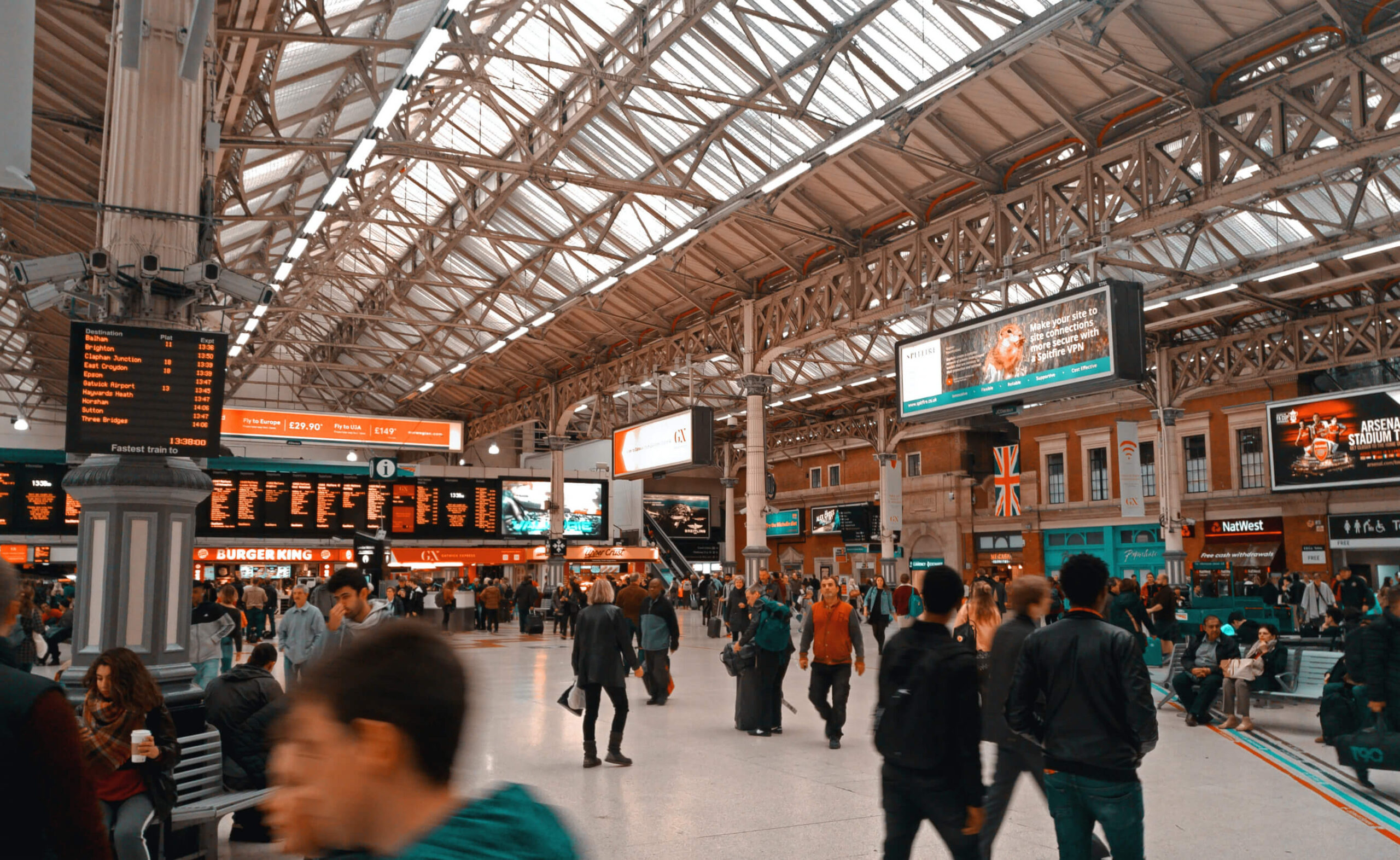Motivation
The use of public transport has been discouraged since the Covid-19 pandemic became prevalent throughout the UK. The large numbers of people potentially being in close proximity have led to the perception that this is less safe than using other modes.
Like other viruses, Covid-19 can be spread through person-to-person contact. An infected person (whether or not they are showing symptoms) can also spread the virus through respiratory causative agents that are inhaled, ingested or in the air. Infections can also occur when these droplets land on shared surfaces—if another person touches then transfers the droplets to their eyes, mouth or nose.
Therefore, the analysis and estimation of person-to-person contacts throughout the undertaking of a journey on public transport (specifically a rail-based journey) can assist in the preparation of public transport bodies in offering a safe and effective journey where the risk of transmission of Covid-19 is reduced. This would assist in not only improving the health and safety of the general population as they travel on public transport, but also improve the image of public transport, which has suffered during the Covid-19 pandemic due to the nature of the spread of the virus as described above.
The continued and increased use of public transport is vital in order to meet the UK’s climate and emissions targets, and there is, therefore, a motivation to ensure people feel more comfortable with taking a journey by public transport. This research will help in determining what constitutes a safe level of exposure when making a journey by train.
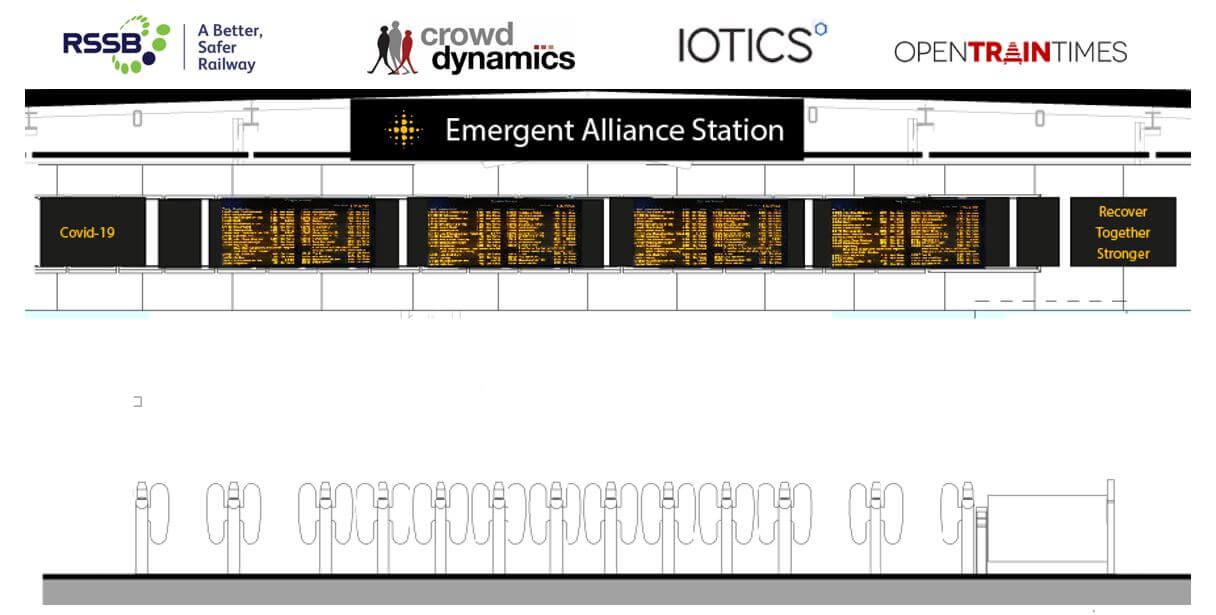
Data – Rail Journey Segments
The journey a rail passenger undertakes can be broken down into several segments:
- moving through the station concourse;
- purchasing tickets and other retail interactions;
- passing through the gate line;
- moving and waiting on the platform; and
- on the train itself.
Rail Industry-standard crowd simulation software LEGION was used to simulate different parts of the journey, with a focus on the train-platform interface. An innovative approach was developed to estimate the number of person-to-person contacts that occur throughout the simulated passenger movement. The simulations contain ‘entities’ (passengers) that replicate human behaviour as they move through a physical space. By post-analysing datasets on passenger location over time, the spatial arrangement of passengers for each second through the simulation is known. The proximity of each individual passengers to one another can be obtained.
Within this methodology, any single event where two people come close together (< 4m) is counted as two contacts. Essentially, a single contact per person is assumed given person A is exposed to person B and equally person B is exposed to person A.
Different types of train and carriage design were sought to be able to give an accurate representation of the physical geometry passengers move through when modelling in LEGION. Crowd Dynamics International’s expertise in people movement and crowd behaviour provided a solid grounding to be able to model the realistic movement of passengers throughout the stations, on the platforms and within the trains themselves.
Crowd Modelling Index Methodology – Modular Approach
Taking a modular approach simplified the complex processes of passenger behaviour by separating the journey into distinct parts. The parts are modelled individually using the modular approach which allows for the creation of a crowd modelling index, which includes all the elements of a train journey that were modelled within LEGION, as well as the outputs it is possible to obtain from the crowd models. The crowd modelling index is represented below. For the purposes of the modelling, the rail journey begins for the passengers as they emerge onto the platform and begin moving around. In the future, it is envisaged that the models can be expanded to incorporate the pre-platform elements (such as ticket purchase, waiting areas etc.) as well.
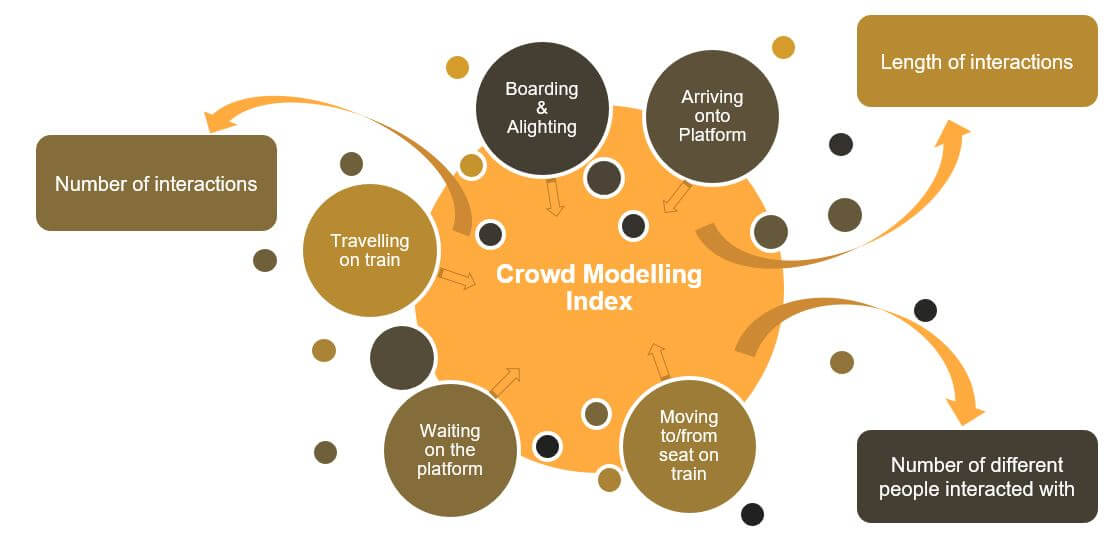
The modelling itself used a process of generating datasets over combinations of variables. Train stations and train carriages follow a similar process during the journey but are very different in design from a crowd movement perspective. The variables parameterised across the simulations were: platform depths from 2-5metres; demand for boarding and alighting; train type; carriage type; seating arrangements; standing capacity; and directional flow patterns.
Train types and loading
The train simulations were run using 100% seat occupancy and 50% seat occupancy (one available seat on each pair of seats and diagonally on each row/window seats only on each row). The following train types, all of which are commonly in use in the UK, were included in the simulations:
- Class 800 (88-seat standard class Azuma) carriage
- Class 350 (60-seat TOCL) carriage
- Class 378 (62-seat DMOS L) carriage
In future, the model boundaries and additional complex scenarios would be added to capture a passenger journey throughout the station and on the train in full. The end goal is that the innovation achieved could be implemented on all trains, train stations and routes across the UK network, which would provide data on specific passenger journeys.
The scenarios included in the demo train simulations are displayed in the below figure.
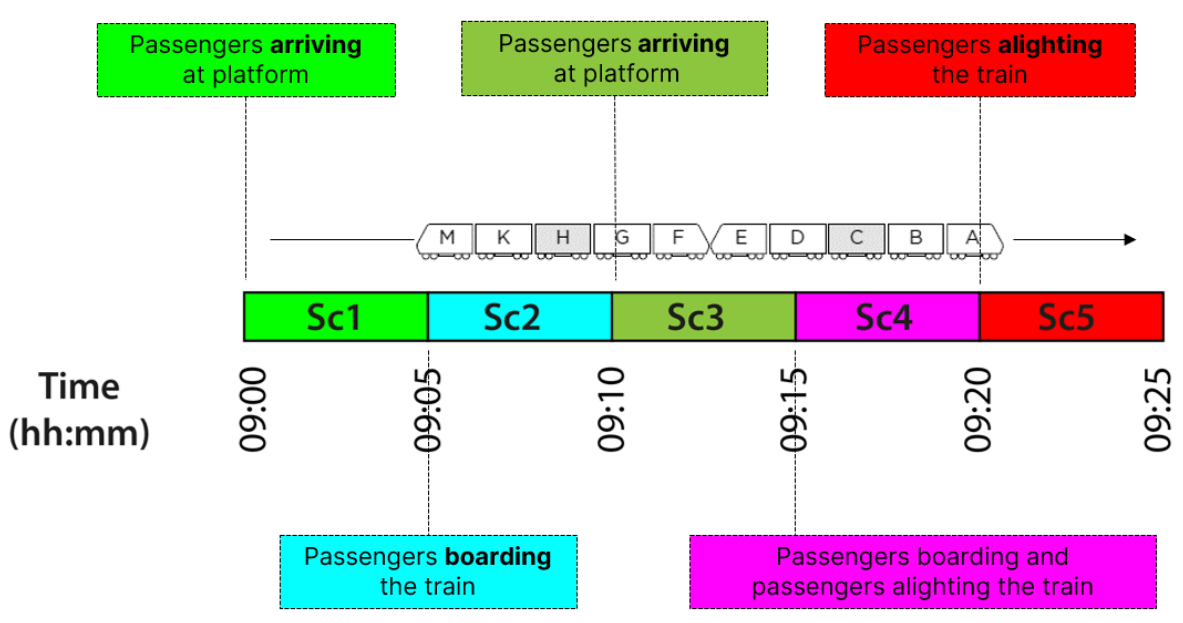
Results
Simulation videos
The figure below shows the example results from the simulation. The following outputs are included:
- Number of interactions;
- Number of different people interacted with; and
- Length of interactions.
The results of each of the modular simulations can be combined to effectively build an overall passenger journey.
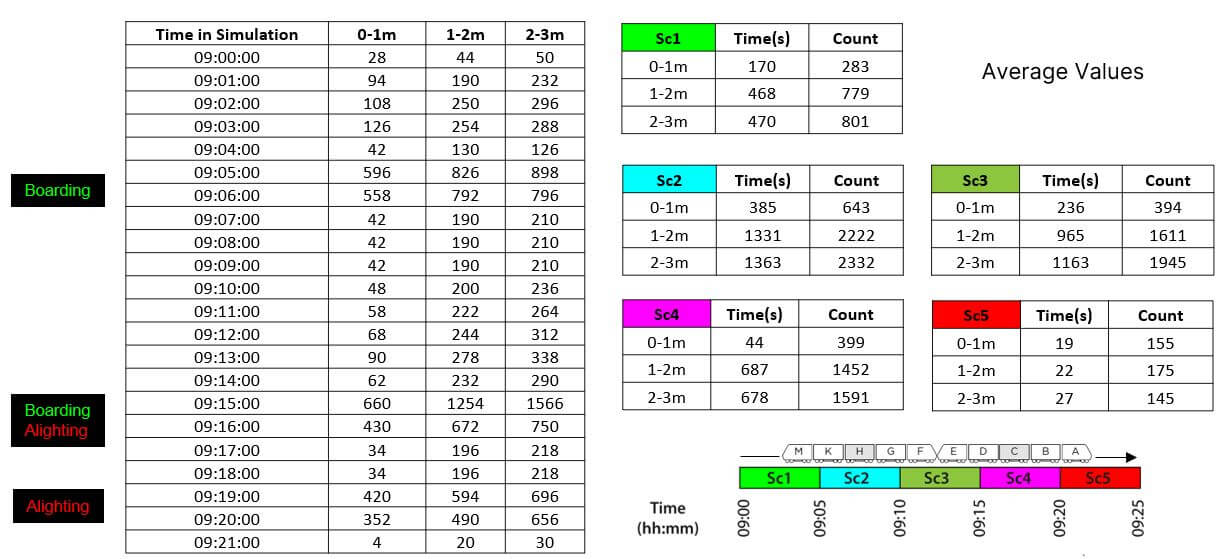
Using the simulation results to estimate infection risk
Once the simulations have been scoped and run, the results are passed to the Rail Safety and Standards Board (RSSB). RSSB calculates the risk of infection per average passenger journey by combining simulation results from different parts of the modular crowd modelling index.
This allows an estimation of the inherent risk of travelling by train in the current situation. The estimation can be factored through the introduction of measures such as face masks or ventilation, the general infection rate currently being seen in the country, the impact of variant strains of Covid-19 and the rollout of vaccinations to the population.
The overall result of this is the ability to quantify a percentage risk of Covid-19 infection per rail passenger at any given time. This allows the simple application of the modelling work undertaken by Crowd Dynamics International to the real world and assists rail companies in their efforts to offer a safe and trustworthy service.
Further development and ongoing work
- The modelling work is an ongoing process as further iterations to the parameters and methodology are continually scoped, developed and implemented. The following potential elements are considered for ongoing work in the future:
- Different loading including standing passengers;
- Different platform widths;
- Different arrival location to the platform;
- Additional train types;
- Concourse and other areas of the station i.e., gate lines;
- Work towards using dynamic live data feeds to real-time warning system;
- Build a nationwide stratified station layout plan;
- Create digital twins for station and carriage layouts; and
- Crowd management to lower risk or increase throughput.
References
The infection risk model –
https://www.rssb.co.uk/what-we-do/the-coronavirus-pandemic-how-we-can-help-you/infection-risks
Rail Challenge Statement –
https://emergentalliance.org/challenge-themes/mobility/the-normalisation-of-rail-passenger-services/
Authors
Win Thi Ha is a Principal Consultant at Crowd Dynamics International who has worked on a diverse range of projects using specialist crowd and transport simulation software to aid in the optimisation of designs. His analysis of crowd behaviour and forecasting of crowd movement has led him to help design safe, efficient and accessible spaces across a wide range of situations. This includes rail stations, transport hubs, stadia, event spaces, the urban realm and visitor attractions.
Paul Townsend is a Director at Crowd Dynamics International. Paul is a highly qualified crowd and pedestrian movement expert who has a unique understanding of the movement and dynamics of large crowds. He has significant and specialist experience in the modelling and optimisation of rail station layouts. Paul has presented various talks on crowd modelling, crowd and pedestrian safety and crowd management around the world and has given guest lectures at Leeds Metropolitan, Imperial College, Southampton Solent and Newcastle Universities.
Special thanks to Maneesha Syea, Ali Chegini, Sophie Peachy, Matt Hunt, Gilad Amzaleg and Peter Hicks who helped in sourcing different train layouts and gave the feedback & guidance on passenger behaviours which helped develop the iterative modelling process.

